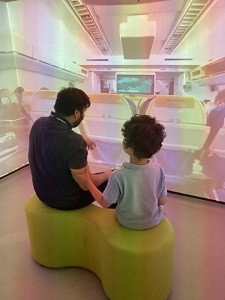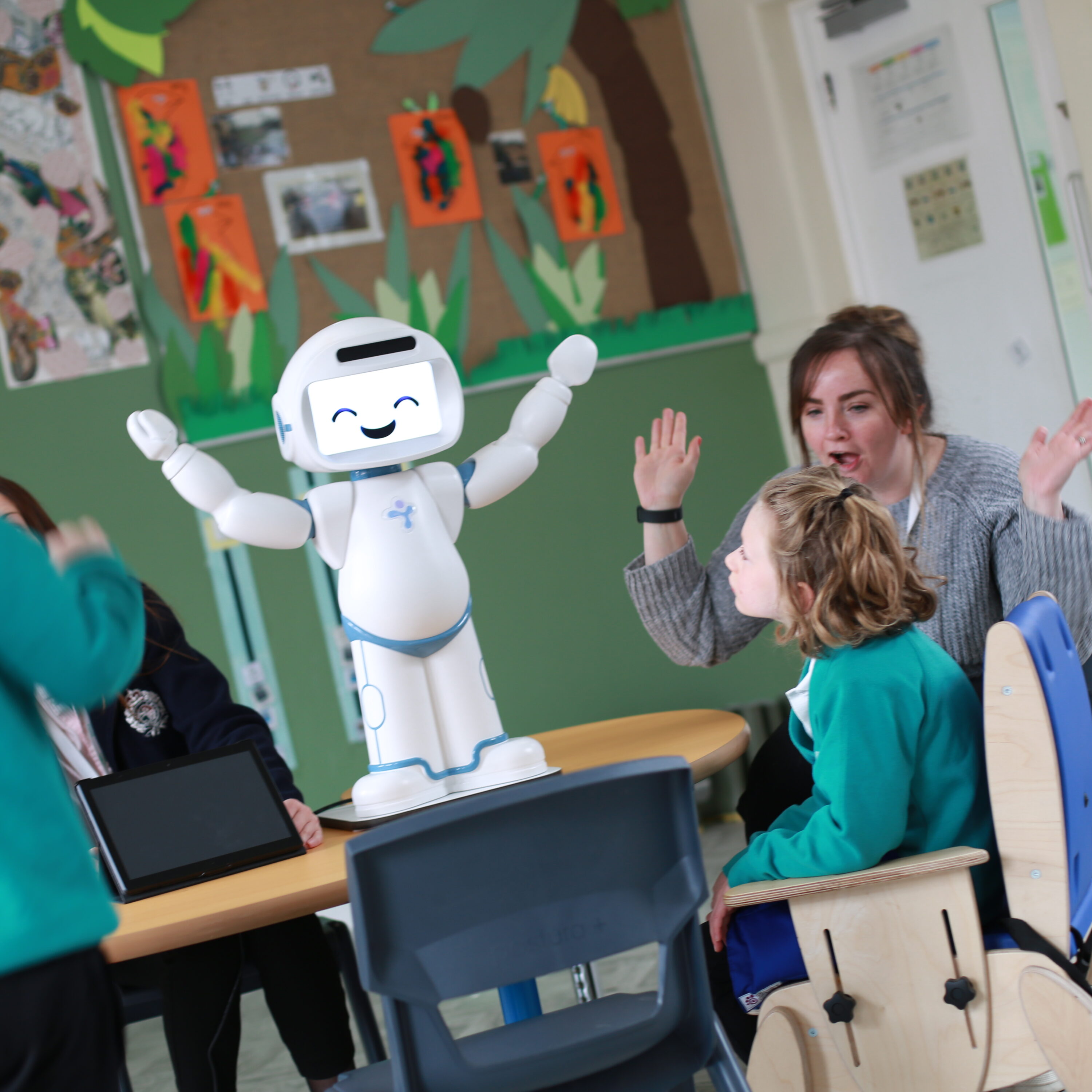Outcomes First Group announces acquisition of Tute Education
Outcomes First Group is delighted to announce the acquisition of Tute Education, a trusted provider of online
By Diane Beddingfield, Director of IT
“If a child can’t learn the way we teach, maybe we should teach the way they learn” – Ignacio Estrada, 21st Century educator
The rewards edtech innovation has to offer the education sector are hard to beat, and I can’t think of a better sector to be working in if you want to exploit the endless technological opportunities available to the curious minds of children. We meet the needs of children with special educational needs (SEN) for whom mainstream education is unsuitable.
Our pupils have complex diagnoses, including autism, ADHD, social, emotional and mental health (SEMH) needs and learning disabilities. Outcomes First Group schools are specifically designed to provide a child-centred education, fitting learning around individual needs. We have the freedom and flexibility to adapt. We can change the school day – the times and frequency of lessons – to ensure our pupils have comparable and successful learning experiences within a delivery, repetition, and pace more suited to their needs. We accommodate therapy sessions in-between lessons, take learning outdoors or into a kitchen rather than at a desk, and we harness the potential of technology in an integrated way to meet pupil’s needs.
Visiting any one of our schools, you will see children learning, classrooms with desks and books, but alongside these are catering kitchens, gyms, horticulture greenhouses and specific spaces dedicated to emerging technologies. This environment allows us to approach the curriculum in a bespoke manner.
The buildings are designed to accommodate a wide variety of needs. We are attuned to elements that may trigger our pupils – bright lights, intense colours or loud noises, or curriculum topics that may connect to a child’s personal trauma. We need to be flexible in our coverage and delivery, and above all, creative – inventing new and different ways of delivering our core learning in the most meaningful way for each pupil – and technology offers us innumerable solutions.

Immersive technology offers infinite possibilities. The majority of our schools have an immersion room and a bank of staff trained to film 360 content. The rooms are used to deliver curriculum – to explore the Amazon, or visit a volcano – much as they would be in a mainstream school, but we have also built banks of therapeutic software to enable and extend occupational therapy. Pupils can burst bubbles or catch leaves; sensory circuits help them explore sound and colour; develop motor control; or create calming environments.
Resilience training is our latest innovative project. Using a 360 camera we film content incorporating a pupil’s own environment – for example, their actual dentist office, or hairdresser. For our pupils, visiting a salon in Lewisham High Street isn’t very helpful as far as building tolerance, unless they live there. Initially the pupil is introduced to the new environment with limited movement and without people, and additional stimuli is gradually added until we have a realistic experience. Pupils are able to experience ‘reality’, but with the ability to pause, ask questions, walk around and explore.
Building resilience helps pupils cope in situations such as catching a train or a ferry – where timing is critical, and in reality there may not be time to wait for them to become less anxious. Cameras are sent in advance, and even have the ability to live stream, so the child can have a real time experience and explore places they are particularly wary of, increasing their tolerance through this virtual experience.
This process has proved very successful. Pupils have been able to have their first haircut at a hairdressers, or to go on holiday to visit relatives. Currently we are planning to add music concerts, sporting and other events and places with crowds, so pupils can have the experience with the ability to pause, reduce movement or crowds, and still benefit from cultural and social activities.
The immersion rooms are also useful to practice routes for pupils going to new schools, or to visit family member’s new homes. We film specific routes for individual pupils to practice in advance. The immersion room provides experiences with minimal risk, builds capacity and widens the children’s horizons.

Across our Options Autism schools, settings specifically designed to meet the needs of autistic children, we use QTrobots by LuxAI.” The robot is used by pupils of all ages, and is primarily a tool for our children to access speech and language practice. Our in-house speech therapists, set up programmes of content from the software packages. Pupils can practice those elements that they struggle with – whether that is taking turns in conversations, understanding sarcasm or nuance, or practicing social interactions – buying something at a shop, or ordering food in a café.
Pupils may need to practice and repeat multiple times in order to be confident and happy. QTrobot is the perfect tool for this. The robot is predictable, always has the same inflection and accent, is happy to go again, no matter how many times, and celebrates getting it right every single time.
For our children, this level of predictability is perfect, and gives them the confidence to try new things, or go back and recall previous learning which they may have felt embarrassed to repeat again with an adult – it gives them independence.
We are currently generating our own programs and software with LuxAI, to meet specific needs, and we are part of several large research projects to gather evidence of the impact of using QTrobot in this way.
As with all technology, robust data security with UK standards and accreditation is a must. Access is also an important consideration – either to extract data or to integrate systems. Effective integration architecture enables us to monitor all the tools involved in delivering a child’s education, and feed that data into our academic achievement systems. Without integration, more applications just means greater workload.
Extracting or connecting data to a data warehouse is key for system usage and performance monitoring across all schools. We can check usage to ascertain which tools perform best in terms of curriculum or in terms of the more therapeutic areas.
Data from our immersive technology and QTrobot requires a basic data structure – a single master account for OFG to control data and system access, subdivided for each school to allow independence within centrally defined standards and content.
To support our curriculum, we need filtered access to the wealth of content available on the internet – which can be stored on any secure cloud environment. Content created inhouse is available to all our schools via restricted cloud access. Pupil-specific content is restricted to a specific school or site with named teachers.
Data on the performance of our immersive technologies and QTrobot, is monitored according to:
- The popularity of content – league tables across the group
- Immersive and QTrobot usage across the sites
- Areas of the curriculum receiving the greatest benefits
- Schools use of bespoke content and levels of usage
This data provides an overview, and allows training or coaching intervention and support for sites with lower usage. The information can also indicate existing gaps in content required to meet the needs of a cohort of pupils. Edtech is developing at a phenomenal rate and teachers and staff need to be supported to keep abreast of each step change.
In the pipeline this year – we will be sending children skiing in wearable technology – vests and watches that monitor heart rate, altitude, speed, etc – so they can graph and explore their trip once they return. Our own drones equipped with 360 cameras will film the local area around the schools, so pupils can explore further afield without the need for long journeys – which has previously been a barrier. We are adding music technology and photography suites, so pupils can generate their own concerts, and walk through their own designs in the immersion rooms.
What we are really looking for is true gamification. Many of our children have experienced long periods out of school, playing on their consoles and not engaging with learning. We want to bridge the gap between curriculum and play, and enable teachers and children to generate their own games which include curriculum learning that’s playable and fun.
So far, we haven’t found the solution, the systems or software is either too rigid to adapt to meet our pupil’s needs, or they’re too vague and teachers don’t know where to start. Potential solutions need to meet our data security and accessibility standards – so they must be hosted in the UK and also have the integration capability we need.
Over the past few years the levels of development in the edtech sector has been astonishing. Embracing these innovations and harnessing their power is genuinely making a difference to the achievement and performance of our schools.